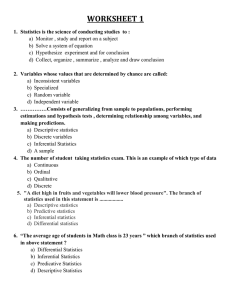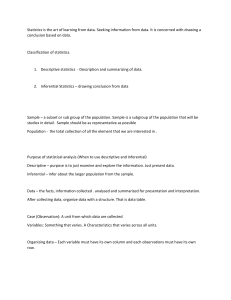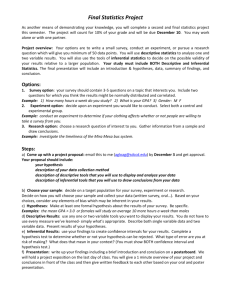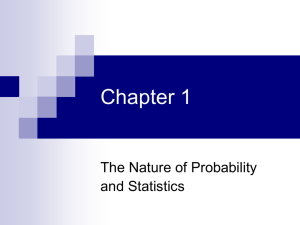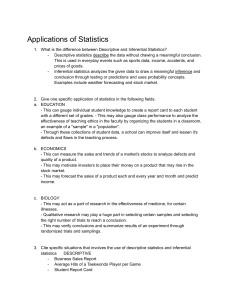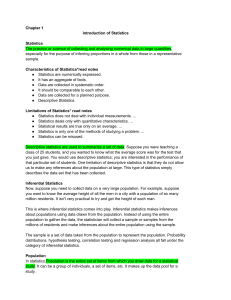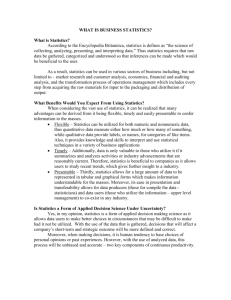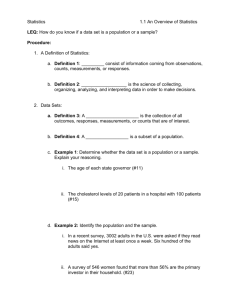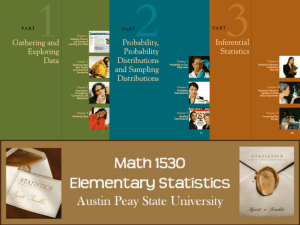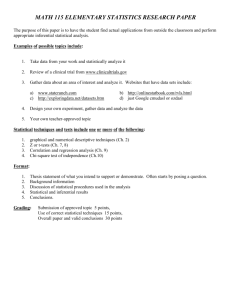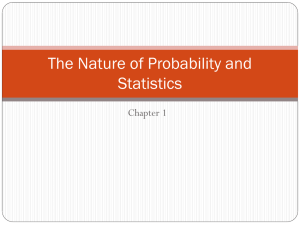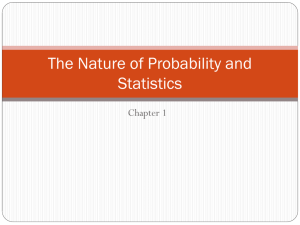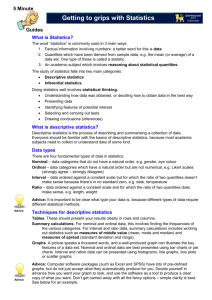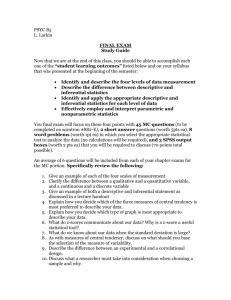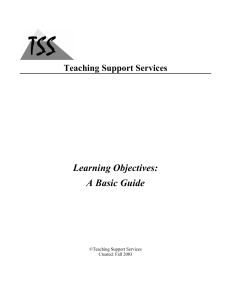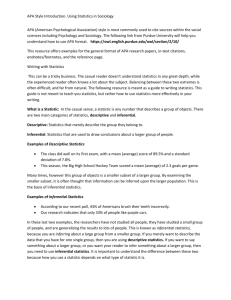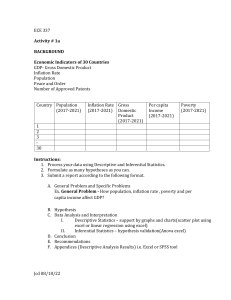Chapter 1.1
advertisement
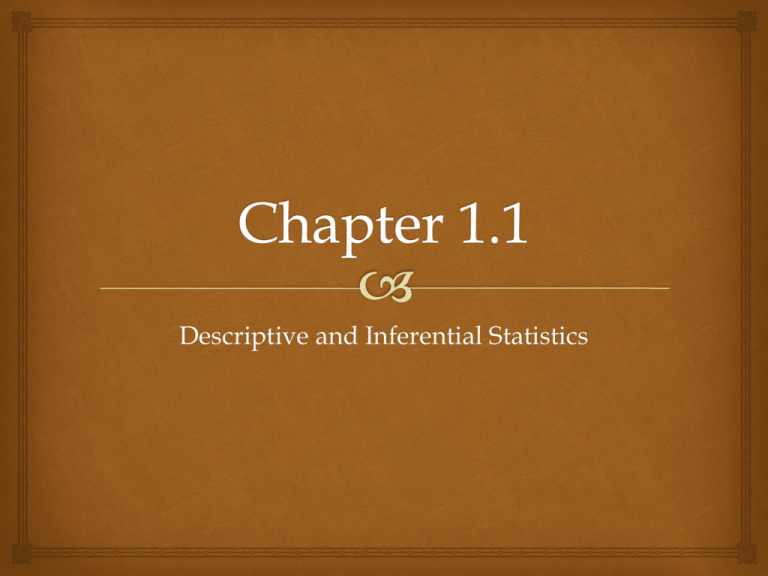
Descriptive and Inferential Statistics Statistics You’re already familiar with statistics through radio, television, newspapers, and magazines: Eating 10 g of fiber a day reduces the risk of hearth attack by 14% (Readers Digest) In 2008, the average credit card debt for college students was $3173 (Newser.com) About 15% of men in the U.S. are left-handed and 9% of women are left-handed (Scipps Survey Research Center) Where is Statistics used? Sports Health Education Marketing Politics What is Statistics? Statistics is the science of conducting studies to collect, organize, summarize, analyze, and draw conclusions from data. Statistics is used to analyze the results of surveys and as a tool in scientific research to make decisions based on controlled experiments. Other uses of statistics include operations research, quality control, estimation, and prediction. Why study Statistics? 1. To be able to read and understand the various statistical studies performed in your field. 2. To conduct research, design experiments, make predictions, and communicate results 3. Be a more well informed consumer and citizens Definitions 1. Variable – a characteristic or attribute that can assume different values 2. Data – the values (measurements or observations) that the variables can assume 3. Random variables – variables whose values are determined by chance 4. Data Set – a collection of data 5. Data value – each value in the data set Descriptive Statistics Descriptive statistics consists of the collection, organization, summarization, and presentation of data. It describes a situation. Example: US Census Inferential Statistics Inferential statistics consists of generalizing from samples to populations, performing estimations and hypothesis tests, determining relationships among variables and making predictions. It uses probability (the chance of an event occurring) Example: BINGO Population vs. Sample A population consists of all subjects (human or otherwise) that are being studied. Most of the time, it is not possible to use the entire population for a statistical study. A sample is a group of subjects selected from a population. If subjects of a sample are properly selected, they should possess similar characteristics as the subjects of the population. Hypothesis Testing A decision-making process for evaluating claims about a population based on information obtained from samples. An area of inferential statistics Try it! Pg. 5-6 #1-6
